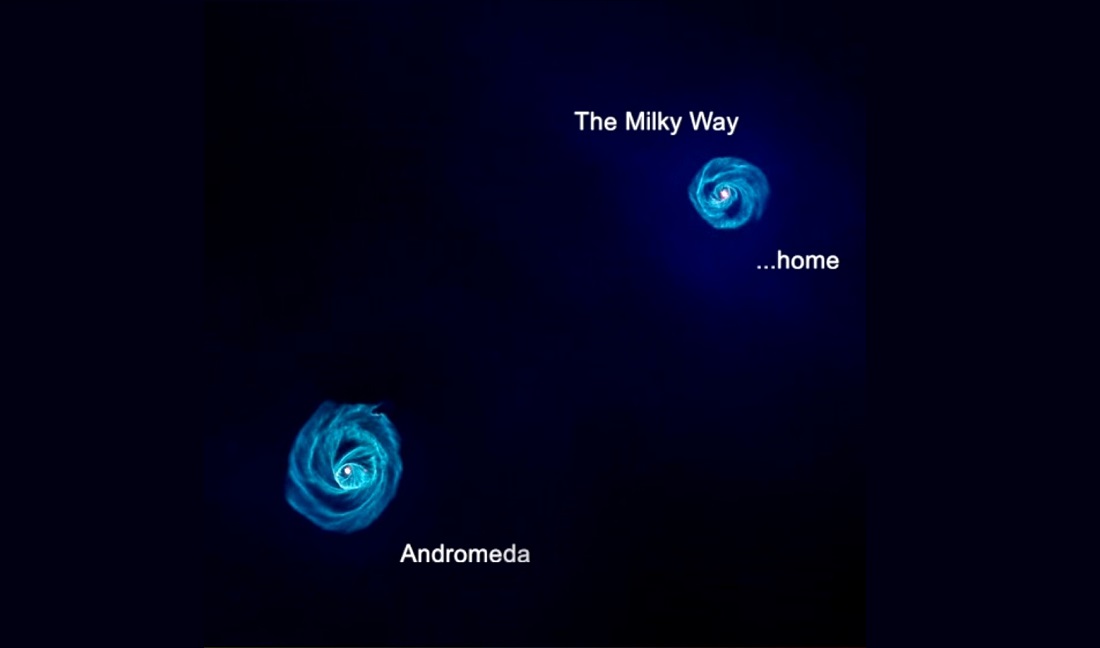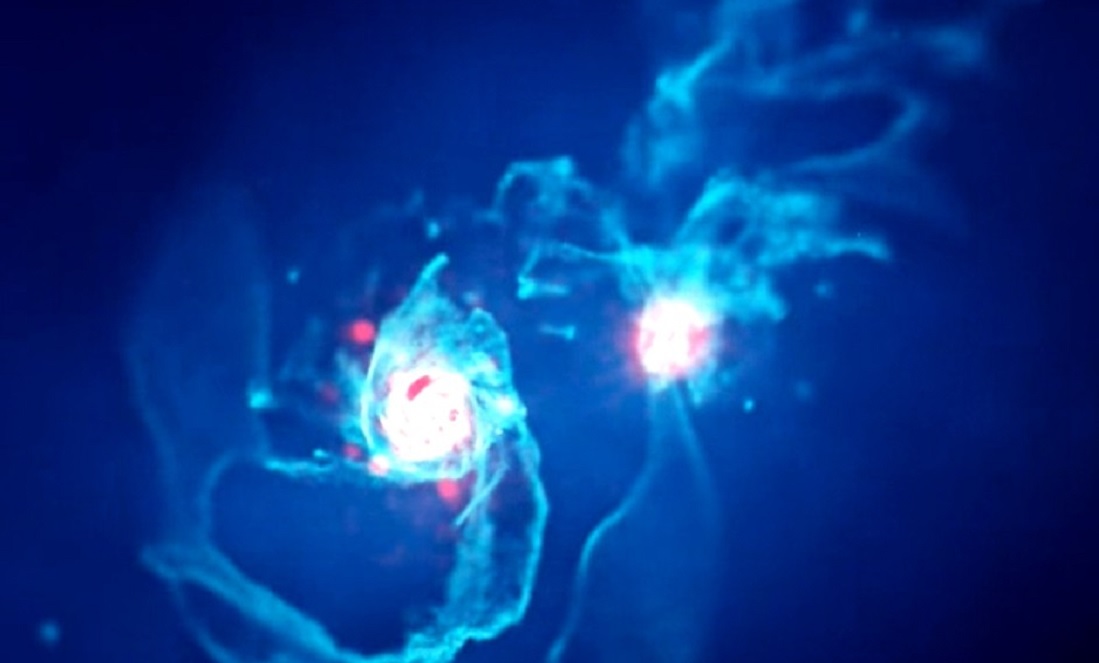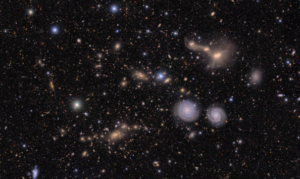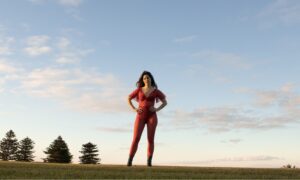Around 4-and-a-half million years from now, our Milky Way galaxy will smash into the Andromeda galaxy.
This galaxy is our nearest neighbour, a mere 2.5 million light years away — practically intergalactic spitting distance.
What will happen when these giants collide depends on which galaxy’s packing the most weight.
“We used to think the Andromeda galaxy was three to four times larger than the Milky Way,” says Dr Prajwal Kafle, an astrophysicist with the UWA node of the International Centre for Radio Astronomy Research. “If you look in any textbook, that’s what you’ll see.”
“We discovered the weight of Andromeda galaxy is almost on par with the weight of the Milky Way galaxy,” Prajwal says.
This smaller estimate doesn’t mean Andromeda contains fewer stars – in fact experts estimate it has 5 times more stars than our Milky Way.
It’s the elusive, invisible matter which glues them all together that’s making up the difference – Dark Matter.

Dark matter points the way
Dark matter is a mysterious invisible contributor to a galaxy’s weight.
We don’t know what it is, but thanks to US scientist Vera Rubin, we know it’s there.
“Vera Rubin established the existence of dark matter in the 1970s,” says Prajwal. She worked out that what we can see of the Andromeda galaxy simply isn’t enough to cause the gravity we know is acting on the system.
We only see around 10% of a galaxy. The rest is dark matter.
“Dark matter is very mysterious,” Prajwal says. “If anyone could find out what exactly that dark matter is … well, a Nobel Prize is waiting, everyone knows that.”
Escape from Andromeda
To work out how much a galaxy weighs, you can calculate how fast you’d need to travel to escape its gravitational pull. The higher the speed, the greater the gravitational pull. The greater the pull, the heavier the galaxy.
To escape the Milky Way, you’d need to be travelling at 550km/s. This means our galaxy weighs in at around 800 billion times the mass of our Sun.
And now we know the Andromeda galaxy is about the same.
This new estimate changes our understanding of how the Andromeda galaxy formed, how it is evolving and how it interacts with other galaxies. It also informs what we know about our own galaxy.
“We don’t know how our galaxy looks from the outside, so looking at Andromeda is the best way for us to see what it might look like.”
What doesn’t change is the inevitability of a clash between the Milky Way and Andromeda.
Do we need to be worried?
“Yes, you should be really worried if you are going to live for the next 5 billion years,” Prajwal laughs. “Otherwise, I think, no.”









